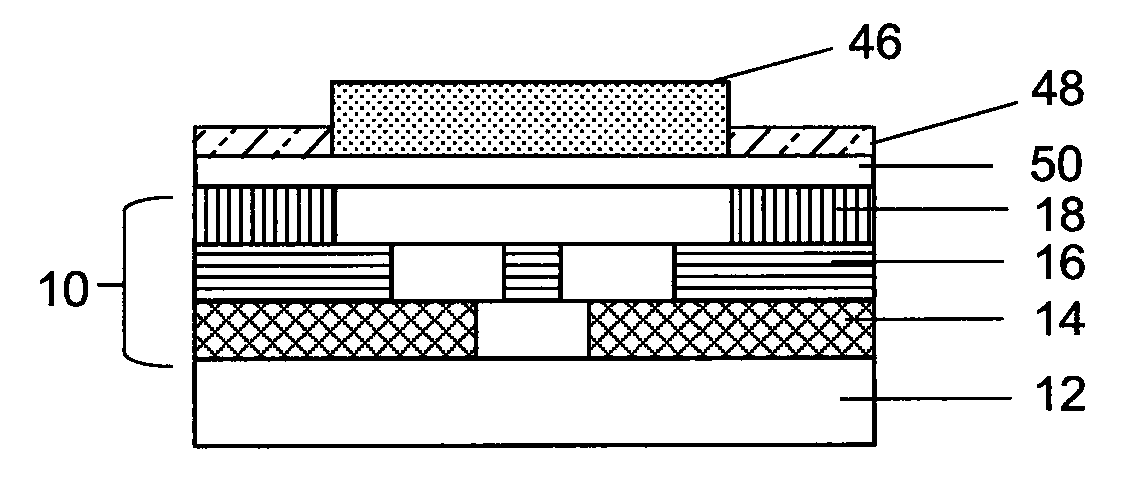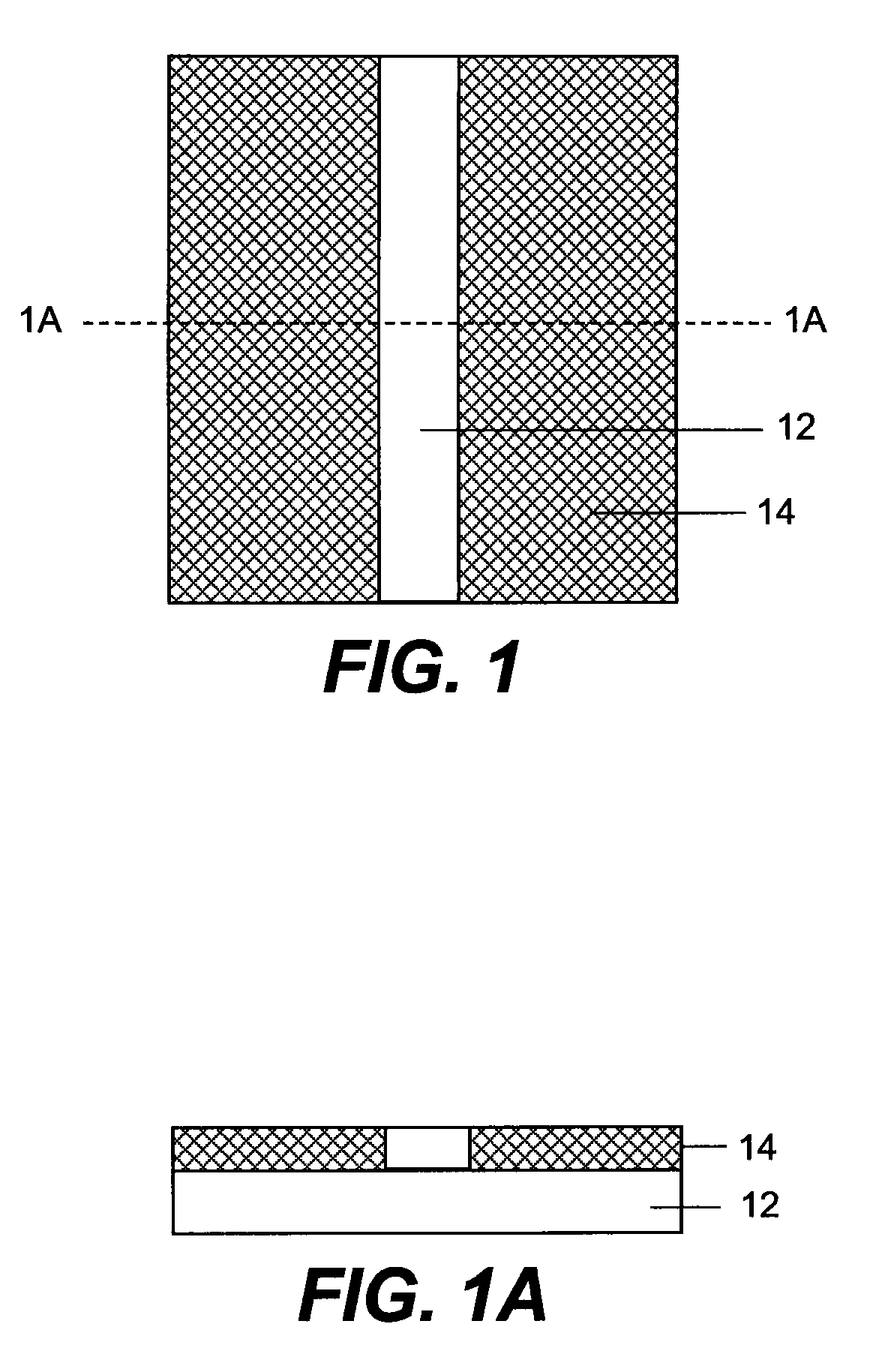Colored mask combined with selective area deposition
a selective area deposition and masking technology, applied in the field of colored masking technique, can solve the problems of affecting the performance and ability to perform alignment of transistor components, affecting the overlay accuracy achievable using traditional photolithography equipment, and applying multiple layers at extremely high speeds, so as to reduce the number of cleaning steps
- Summary
- Abstract
- Description
- Claims
- Application Information
AI Technical Summary
Benefits of technology
Problems solved by technology
Method used
Image
Examples
example 1
Multicolor Mask Formed by Direct Printing Process
[0180]In this example, a multicolor mask was prepared containing three color absorbing layers, with each color corresponding to an individual functional layer of an array of thin film transistor devices. The design for the gate layer of the array of thin film transistor devices was converted into a black and white bitmap file. The design for the semiconductor layer of the array of thin film transistor devices was converted into another black and white bitmap file. The design for the source and drain layer of the array of thin film transistor device was converted into a third black and white bitmap file. These bitmaps were then imported into the blue channel, green channel, and red channel of a single color image file using Photoshop 6.0. In this full color image, the blue channel contained the gate layer design as a yellow pattern. The green channel contained the semiconductor layer design as a magenta pattern. The red channel contain...
example 2
Multicolor Mask Formed by Photolithography Process
[0181]In this example, a multicolor mask was prepared containing three color absorbing layers, with each color corresponding to an individual functional layer of an array of thin film transistor devices. Chrome on glass masks for the gate layer (CG-1), semiconductor and dielectric layers (CG-2), and source and drain layers (CG-3) of the array of thin film transistor devices were obtained from Applied Image Incorporated. A 0.7 mm thick borosilicate glass support was washed for 10 minutes by treating with a solution of 70% sulfuric acid and 30% of a 30% solution of hydrogen peroxide maintained at approximately 100° C. After washing, the clean glass was spin coated (at 1000 RPM) with Color Mosaic SC3200L (purchased from Fujifilm Electronic Materials Co., Ltd.). SC-3200L is a UV curable photoresist containing 3-5% of a cyan pigment, 7-9% of a methacrylate derivative copolymer, 7-9% of a polyfunctional acrylate resin and a UV photosensiti...
example 3
Blue-Curable Film Formulation
[0184]A coating solution C-1 for the blue light curable film was prepared as follows. A solution of blue sensitive photoinitiator was prepared by adding 0.03 g of photoinitiator A to 3 grams of toluene.
Photoinitiator A:
[0185]
[0186]In a separate vial, five grams of polymethylmethacrylate (PMMA) (MW ˜75K) were dissolved in 45 g of anisole. To 2.9 g of the resulting PMMA solution, 0.95 g of trimethylolpropane triacrylate and 0.5 g of the solution of photoinitiator A were added.
Green-Curable Film Formulation:
[0187]A coating solution C-2 for the green light curable film was prepared as follows. A solution of green sensitive photoinitiator was prepared by adding 0.03 g of photoinitiator B to 3 grams of anisole. In a separate vial, five grams of PMMA (MW ˜75K) were dissolved in 45 g of anisole. To 2.9 g of the resulting PMMA solution, 0.95 g of trimethylolpropane triacrylate and 0.5 g of the solution of photoinitiator B were added.
Photoinitiator B:
[0188]
PUM
| Property | Measurement | Unit |
|---|---|---|
| temperature | aaaaa | aaaaa |
| absorption wavelength | aaaaa | aaaaa |
| optical density | aaaaa | aaaaa |
Abstract
Description
Claims
Application Information
 Login to View More
Login to View More - R&D
- Intellectual Property
- Life Sciences
- Materials
- Tech Scout
- Unparalleled Data Quality
- Higher Quality Content
- 60% Fewer Hallucinations
Browse by: Latest US Patents, China's latest patents, Technical Efficacy Thesaurus, Application Domain, Technology Topic, Popular Technical Reports.
© 2025 PatSnap. All rights reserved.Legal|Privacy policy|Modern Slavery Act Transparency Statement|Sitemap|About US| Contact US: help@patsnap.com



